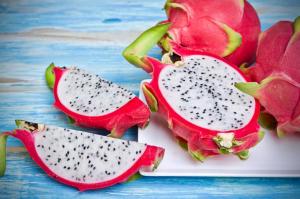Why are My Tomato Plant Leaves all Curled Up?
Tomatoes are one of the most beloved plants in the home garden. However, it can be concerning when the plant leaves start to curl up. If you are experiencing this problem, you are not alone. This article will explore the potential causes of curled tomato plant leaves and what you can do to fix the problem.
Environmental Stress
One of the most common reasons for curled tomato plant leaves is environmental stress. This can occur due to extreme temperature changes, whether it is too hot or too cold. When this happens, the plant may curl its leaves as a protective measure to reduce water loss through transpiration.
Another potential cause of environmental stress is irregular watering. Over-watering or under-watering the plant can cause the leaves to curl up. Therefore, it is essential to maintain consistent watering habits.
Tomato Leaf Curl Virus
Tomato plants can also develop viruses, including the tomato leaf curl virus. This viral infection can cause the leaves of the plant to curl and twist. Additionally, tomatoes affected by the virus may have yellowing and stunted growth.
If you suspect your plant may have the tomato leaf curl virus, it is best to remove it from your garden. There is no current treatment for the virus, and it can quickly spread to other plants in your garden.
Pest Infestation
Pests can also cause curled tomato plant leaves. For example, aphids, spider mites, and whiteflies feed on the sap of the tomato plant. As a result, the plant may curl its leaves to protect itself, and the leaves may appear shiny and sticky.
If you see signs of pest infestation in your garden, you can try using organic insecticides or introducing beneficial insects, like ladybugs. However, prevention is the best method for avoiding pests in your garden. Keeping your garden clean and healthy will help deter pests from attacking your plants.
Nutrient Deficiencies
Tomato plants require certain nutrients to flourish. When there is a deficiency in any essential nutrient, such as nitrogen or potassium, the plant may develop curled leaves. Additionally, the leaves may have a yellow or brown tint, and the plant may produce less fruit.
You can correct nutrient deficiencies by using fertilizer. Be sure to select a fertilizer with the proper nutrient ratio for tomato plants, and follow the instructions for application. However, it is essential to avoid over-fertilization, as this can cause more harm than good to your tomato plants.
Conclusion
Curled tomato plant leaves can be concerning, but there are many reasons for this phenomenon. Environmental stress, viral infections, pest infestations, and nutrient deficiencies are common culprits. By identifying the cause of the problem, you can take steps to correct it and ensure a healthy and bountiful tomato harvest.

 how many times do yo...
how many times do yo... how many planted tre...
how many planted tre... how many pine trees ...
how many pine trees ... how many pecan trees...
how many pecan trees... how many plants comp...
how many plants comp... how many plants can ...
how many plants can ... how many plants and ...
how many plants and ... how many pepper plan...
how many pepper plan...





























